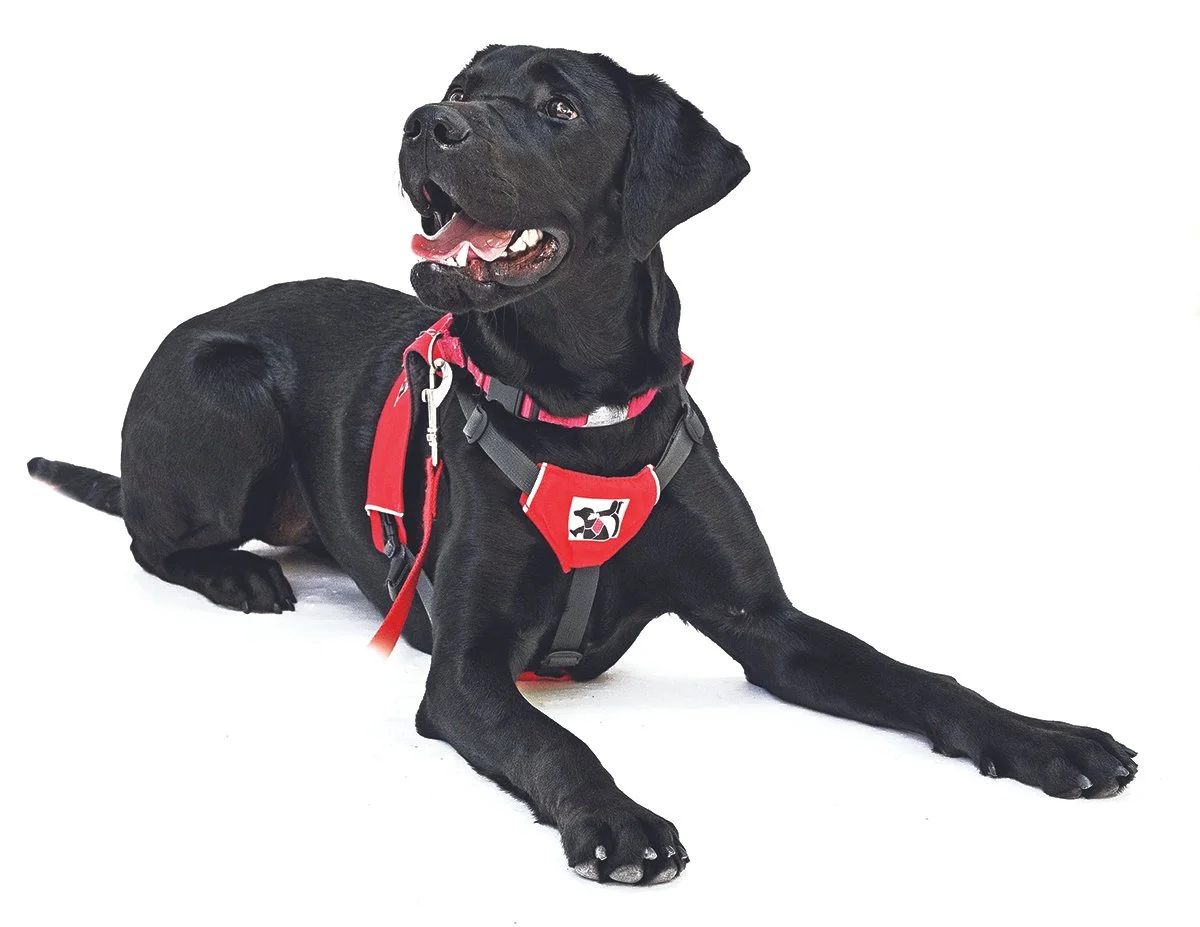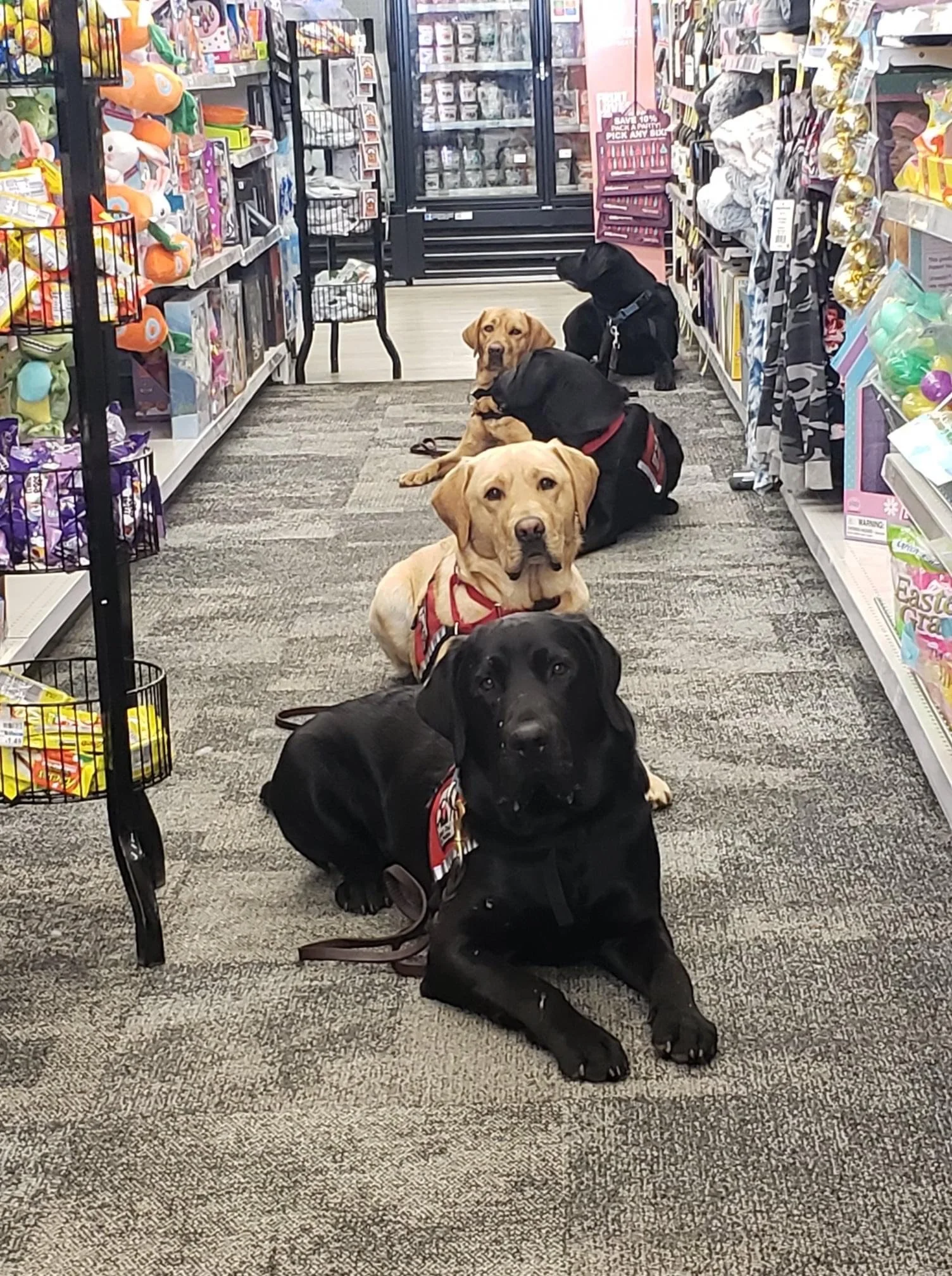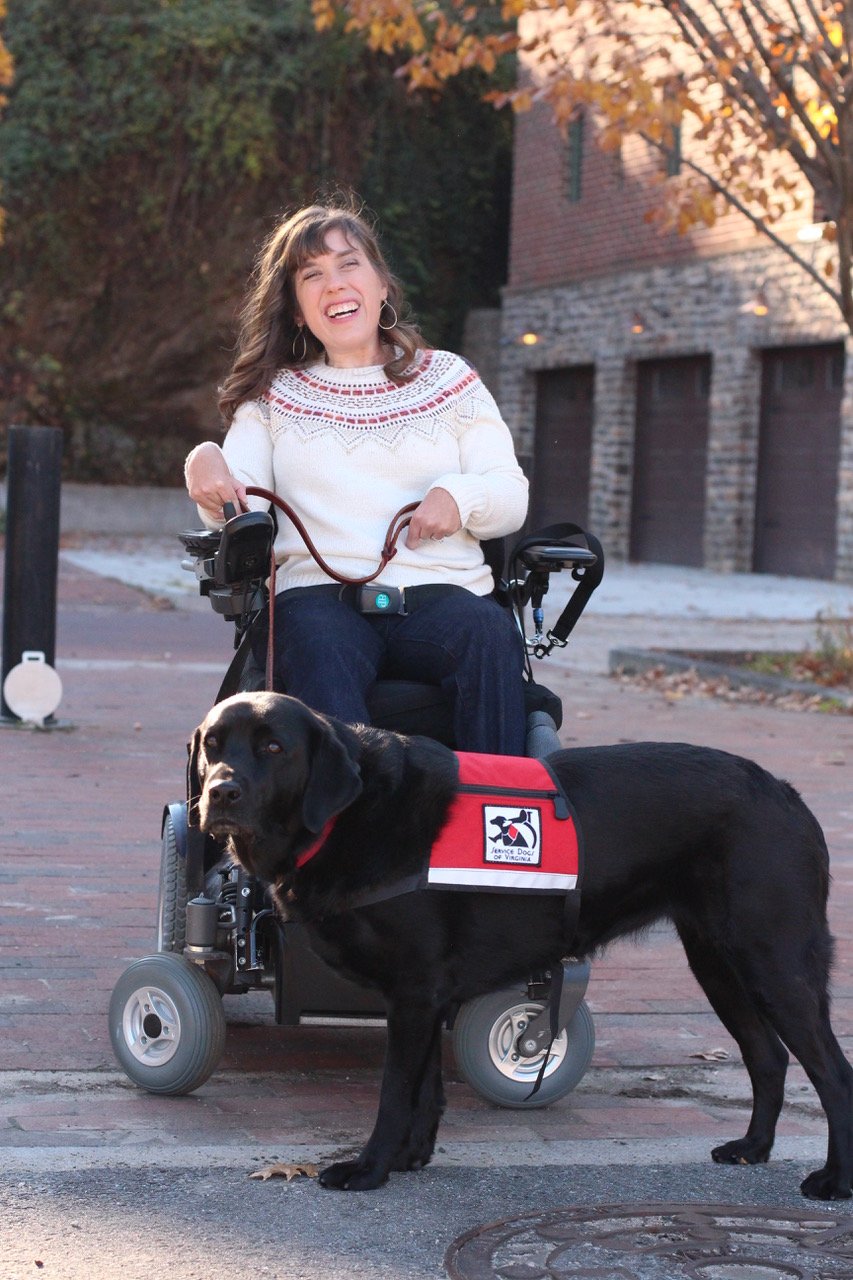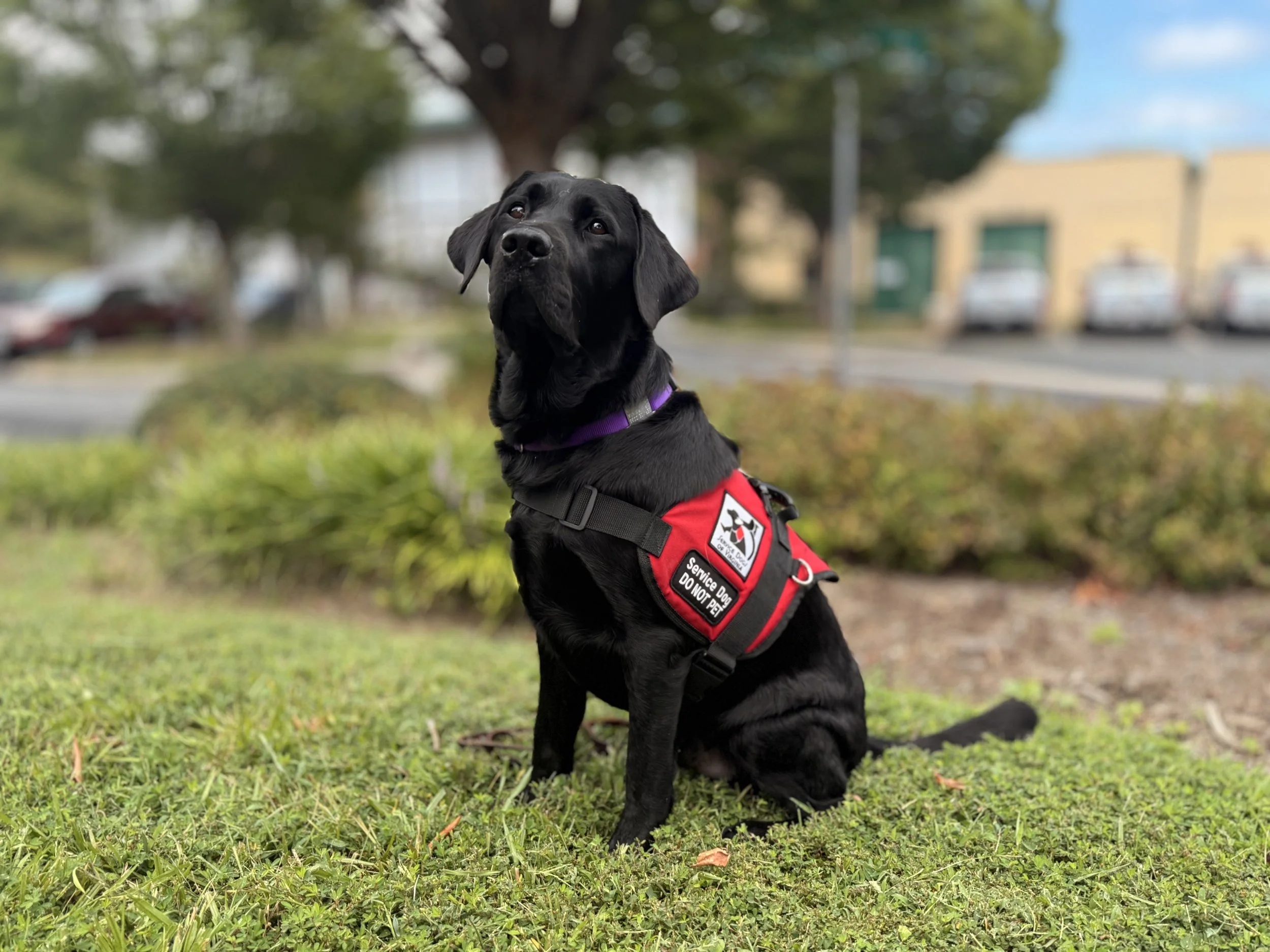September is
National
Service Dog
Month!
Join us in honoring the incredible dogs who bring independence, comfort, and hope.
Learn All About Working Dogs
Not all working dogs are the same. Service dogs, facility dogs, and emotional support animals each play unique roles in supporting people’s lives. Understanding the difference — and knowing proper service dog etiquette — helps ensure these partnerships succeed.
Service Dog Etiquette
Service dogs are working partners, not pets. Learning proper etiquette helps keep them focused, safe, and able to support their handlers. Click below to learn the key guidelines for interacting respectfully with service dogs.
The Journey of a service dog
From training to partnership, see what it takes to become a service dog.
Meet our teams
In honor of National Service Dog Month, we’re celebrating the incredible teams who bring our mission to life. Explore their stories and see how service dogs are making a difference every day. Click on the programs below to read their stories.
-
Service dogs help children with autism build confidence, improve safety, and foster independence at home, school, and in the community. The child benefits from the bond, while a parent or guardian serves as the dog’s trained handler. Read their stories.
-
Specially trained service dogs provide adults with autism daily support, grounding in overwhelming environments, and greater independence. Read their stories.
-
From detecting changes in blood sugar to signaling health emergencies, these dogs provide life-saving alerts and peace of mind. Read their stories.
-
Service dogs assist with mobility tasks such as retrieving items, or opening doors, giving their partners greater freedom. Read their stories.
-
For veterans and 1st responders with PTSD, these dogs bring comfort, interrupt anxiety, and help their partners feel safe and supported. Read their stories.
-
Though not service dogs, facility dogs are specially trained to work alongside professionals in schools, counseling centers, hospitals, and courts. Their calming presence helps reduce stress, foster trust, and support healing for many people in need. Read their stories.







